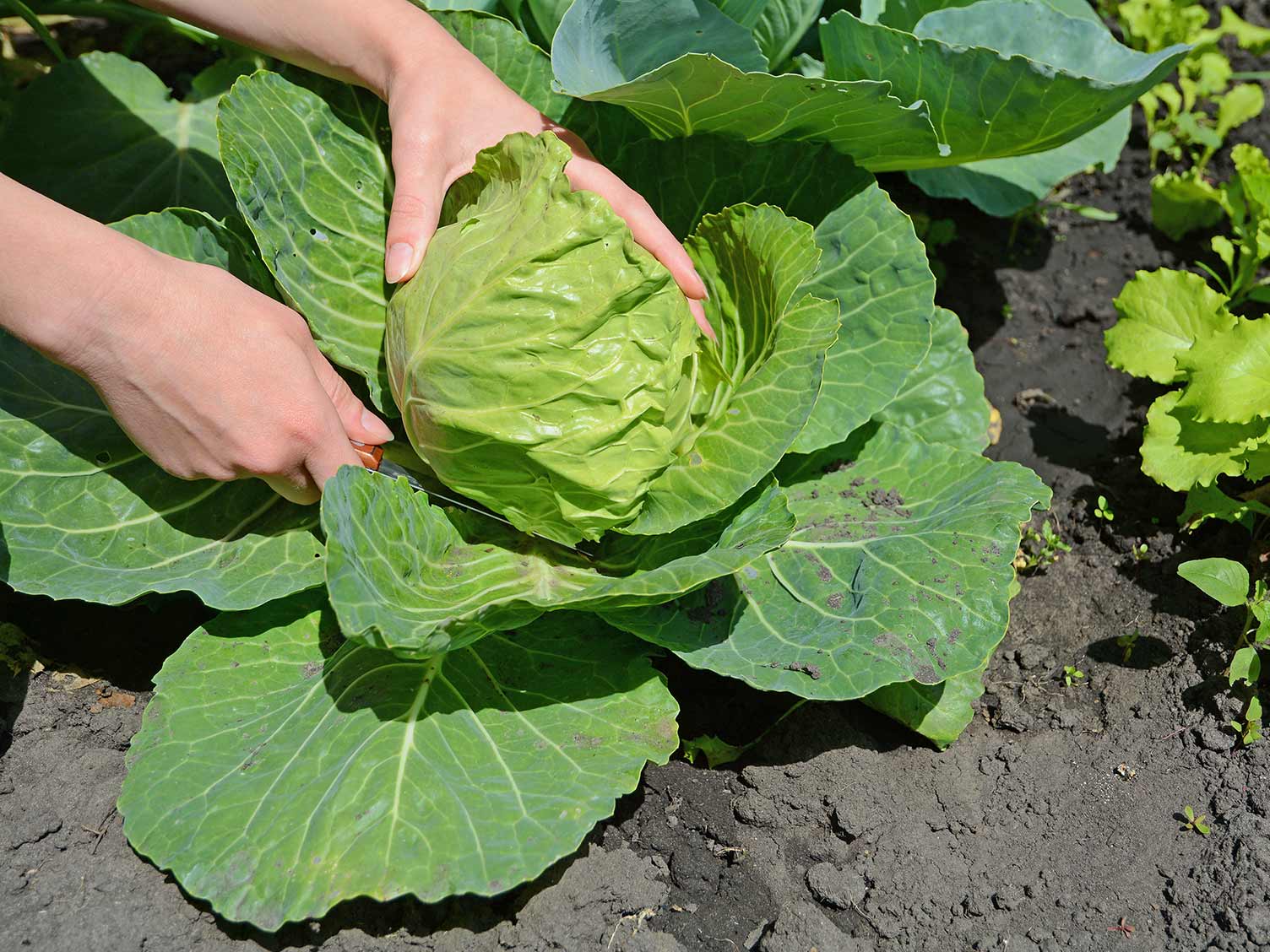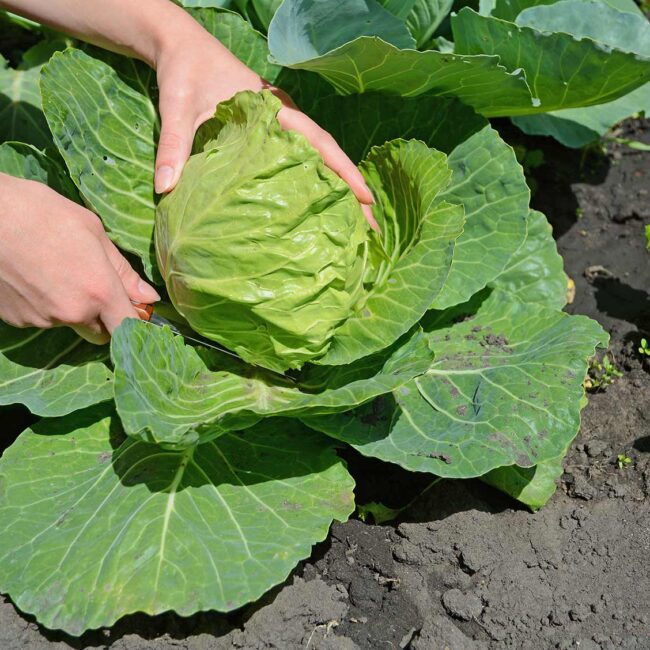Today, we’re diving into the wonderful world of cabbage – a versatile, leafy green that thrives in the UK’s climate. Not only is cabbage easy to grow in our gardens, but it also packs a nutritional punch and offers exciting culinary possibilities. From garden to plate, discover how to grow, cook and finally eat this delicious vegetable, and learn more about the incredible health benefits .
Garden to plate – Growing Cabbage
Cabbage is a cold-hardy vegetable that’s perfectly suited for the UK’s temperate climate. Here’s a simple guide to get you started on growing your own cabbage:
- Variety Matters: Choose the cabbage variety that suits your taste and garden size. Popular options include ‘January King,’ ‘Savoy,’ and ‘Red Cabbage.’ Read the seed packet or plant label for specific instructions.
- Soil Preparation: Cabbages thrive in well-drained, fertile soil. Before planting, incorporate compost or well-rotted manure into your garden bed to boost soil fertility.
- Planting Time: Sow cabbage seeds indoors in early spring or directly in the garden from late spring to early summer. Make sure to follow the recommended spacing on the seed packet.
- Watering: Keep the soil consistently moist, especially during dry spells. Aim to water the soil rather than the leaves to prevent diseases.
- Protection from Pests: Cabbages are sometimes vulnerable to pests like cabbage white butterflies and slugs. Consider using protective covers or organic pest control methods to keep your crops safe.
- Harvesting: Harvest your cabbages when they reach the desired size, typically around 8-12 weeks after planting. Cut them just above the soil level, and enjoy fresh cabbage straight from your garden.
Health Benefits of Cabbage
Cabbage is not just a crunchy addition to your salads; it’s a nutritional powerhouse. Here are some compelling health benefits to munch on:
- Rich in Vitamins and Minerals: Cabbage is packed with essential nutrients like vitamin C, vitamin K, and potassium, which are crucial for overall health.
- Antioxidant Properties: Cabbage contains powerful antioxidants that help combat free radicals and reduce the risk of chronic diseases.
- Digestive Health: The fiber in cabbage supports healthy digestion and can aid in weight management.
- Anti-Inflammatory: Cabbage boasts anti-inflammatory properties, which may help alleviate certain inflammatory conditions.
- Cancer Prevention: Some studies suggest that cabbage may have cancer-fighting properties, thanks to its high content of glucosinolates.
Cooking with Cabbage
Now that you’ve grown your beautiful cabbages, let’s explore some delicious ways to enjoy them:
- Classic Coleslaw: Shred cabbage and toss it with grated carrots and a creamy coleslaw dressing for a perfect side dish at picnics and barbecues.
- Stir-Fried Cabbage: Slice cabbage thinly and stir-fry with garlic, ginger, and soy sauce for a quick and healthy side dish.
- Stuffed Cabbage Leaves: Use large cabbage leaves to wrap around a filling of minced meat or rice for a comforting meal.
- Cabbage Rolls: Make classic cabbage rolls by rolling a mixture of ground meat and rice in blanched cabbage leaves, then simmer them in a rich tomato sauce.
- Fermented Cabbage (Sauerkraut): For a unique twist, try making your own sauerkraut. Here’s a simple recipe:
Homemade Sauerkraut Recipe
Ingredients:
- 1 medium cabbage (about 2 pounds)
- 1 tablespoon sea salt
Instructions:
a. Remove the outer leaves of the cabbage and reserve a few for later.
b. Shred the cabbage finely using a knife or food processor.
c. In a large bowl, mix the shredded cabbage with the sea salt. Massage the cabbage with your hands for a few minutes until it becomes soft and releases liquid.
d. Pack the cabbage and liquid tightly into a clean glass jar, pressing it down with a clean spoon as you go.
e. Lay the reserved cabbage leaves on top of the cabbage in the jar to keep it submerged.
f. Seal the jar loosely with a lid and place it in a cool, dark place for 1-3 weeks, depending on your taste preference.
g. Once fermented to your liking, store the sauerkraut in the fridge.
Growing, cooking, and fermenting seasonal cabbage in the UK is a delightful journey from garden to plate. The versatility of cabbage, along with its numerous health benefits, makes it a must-have in your garden and on your dining table. So, whether you’re enjoying it fresh in salads or trying your hand at homemade sauerkraut, remember that cabbage is not only delicious but also an excellent way to nourish your body. Happy gardening and bon appétit!

